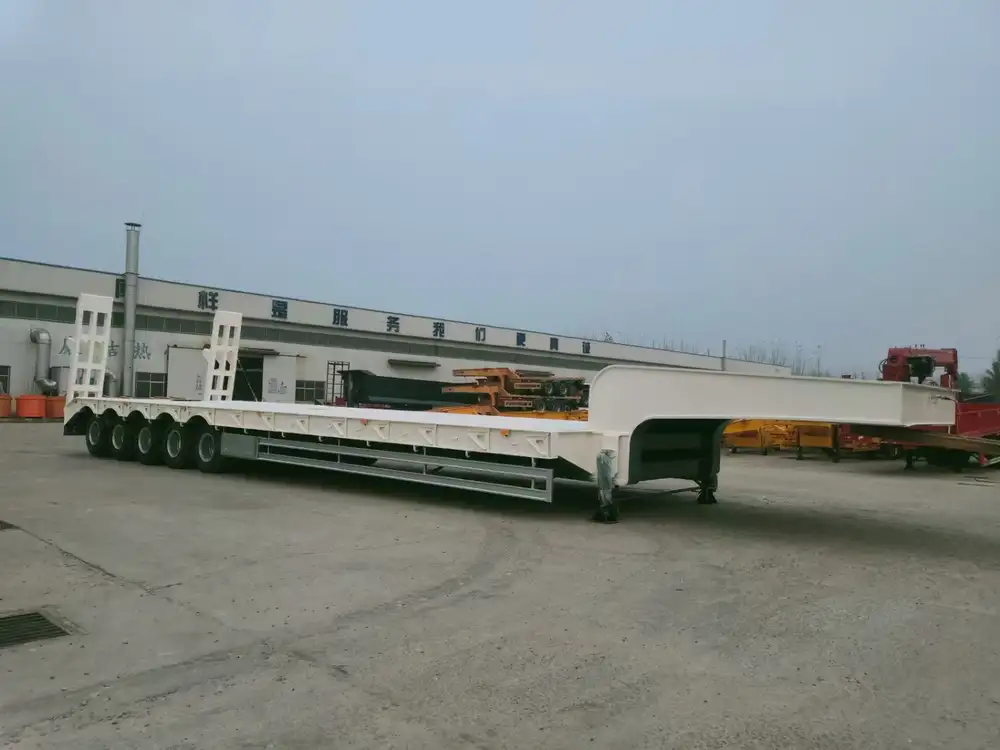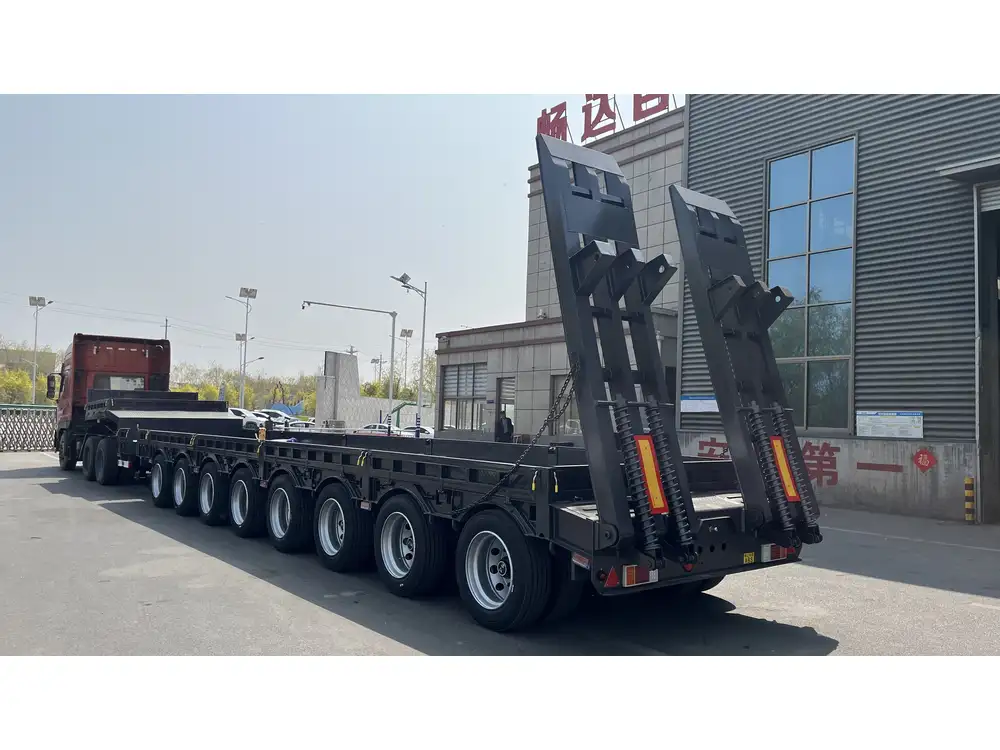Air disc brakes are a crucial component of modern semi-trailer braking systems, providing enhanced performance, reduced stopping distances, and improved safety. However, like any mechanical system, they require periodic adjustment to operate efficiently. This guide offers in-depth insight into how to adjust air disc brakes on your semi-trailer, addressing common issues, detailing the adjustment process, and outlining maintenance tips to ensure optimal performance.
Understanding Air Disc Brakes
What are Air Disc Brakes?
Air disc brakes use compressed air to engage the brake pads against a rotor. This contrasts with traditional drum brakes, which utilize a different mechanism involving shoes and springs. The advantages of air disc brakes include:
Superior Performance: Shorter stopping distances even under heavy loads.
Consistent Power: Less fade during long descents or repeated braking.
Simplified Maintenance: Easier to inspect and service compared to drum brakes.

Key Components of Air Disc Brakes
Brake Rotor: The metal disc that rotates with the wheel hub.
Brake Caliper: Houses the brake pads and acts as the actuator when air pressure is applied.
Brake Pads: Clamps onto the rotor to produce friction and stop the vehicle.
Air Chamber: Converts pneumatic pressure into mechanical force.
Why Adjust Air Disc Brakes?
Maintaining proper adjustment of air disc brakes is essential for several reasons:
Safety: Inadequately adjusted brakes can lead to uneven wear, reduced braking efficiency, and increased stopping distances.
Tire Wear: Incorrectly functioning brakes can cause excessive tire wear, leading to higher maintenance costs.
Regulatory Compliance: Maintaining your braking system ensures compliance with transportation regulations.
Symptoms of Poorly Adjusted Air Disc Brakes
Before diving into the adjustment process, let’s identify some signs that your air disc brakes may need adjustment:
Uneven Brake Pad Wear: Inspect the pads for inconsistency; one pad may wear more rapidly than the other.
Vibration During Braking: This may indicate misalignment or improper adjustment of the brake components.
Increased Stopping Distance: If you notice your semi-trailer takes longer to stop, it’s a clear sign that adjustments may be necessary.
Brake Warning Lights: Dash indicators may alert you to issues in the braking system.

Tools Needed for Adjustment
Before proceeding, gather the following tools to ensure your adjustment is efficient and effective:
| Tool | Purpose |
|---|---|
| Torque Wrench | Ensures bolts are tightened to specification |
| Tape Measure | Verifies gap and spacing |
| Brake Adjustment Tool | Specialized tool for fine adjustments |
| Air Pressure Gauge | Checks air system pressure |
| Safety Gloves | Protects hands during the process |
| Creeper or Mat | Provides comfort while working underneath |
Step-by-Step Guide to Adjusting Air Disc Brakes
Step 1: Preparation
Safety First: Begin by parking the semi-trailer on a level surface and securing it with wheel chocks. Engage the parking brake and disconnect the air supply from the air tanks to prevent unintentional brake activation.

Step 2: Inspect Brake Components
Conduct a thorough visual inspection of all brake components:
Check the Brake Pads: Look for signs of wear, cracking, or uneven wear patterns.
Examine the Rotor: Ensure the rotor surface is free from deep grooves or scoring.
Inspect the Caliper: Make sure the caliper is securely attached and functions smoothly.
Step 3: Measure Brake Pad Gap
Using a tape measure, check the gap between the brake pads and the rotor when the brakes are not engaged. The typical gap should be minimal, ideally around 0.5mm to 1mm. If the gap exceeds manufacturer specifications, proceed with the adjustment.
Step 4: Adjusting the Brake Pads
To adjust the brake pads:
Locate the Adjustment Mechanism: The mechanism is usually found at the back of the caliper.
Insert the Brake Adjustment Tool: Depending on the design, you may need to rotate the adjustment screw or turn a lever to reposition the brake pad.
Tighten until the Pads Just Touch the Rotor: Gradually tighten the adjustment until the pads lightly contact the rotor. Be careful not to overtighten, which can lead to dragging brakes.

Step 5: Check Air Pressure
Once adjustments have been made, reconnect the air supply to the braking system and check the air pressure using a gauge. Ensure the pressure meets the manufacturer’s specifications, typically ranging between 90 to 120 psi.
Step 6: Test the Brakes
Conduct a series of braking tests:
Static Test: With the trailer stationary, apply the brakes and measure the pad-to-rotor gap again. Repeat adjustment if necessary.
Dynamic Test: While driving at low speed, conduct several brake applications to ensure they engage smoothly and evenly.
Step 7: Final Inspection
After testing, perform a final visual inspection of all components. Look for leaks in the pneumatic system or any signs of wear due to tightness or misalignment.

Maintenance Tips for Air Disc Brakes
Regular Inspections
Schedule regular brake inspections every 6 months, or after significant mileage. Pay close attention to wear patterns on rotors and pads.
Clean Components
Keep brake components clean from dust and debris. Utilize compressed air to remove particles trapped between the pad and rotor.

Monitor Air Supply System
Regularly check air lines, fittings, and the air tank for leaks. This will prevent insufficient air pressure and extend the lifespan of the braking system.
Lubricate Moving Parts
Proper lubrication of the caliper and adjustment mechanisms will prevent corrosion and ensure smooth operation.
Conclusion
Proper adjustment of air disc brakes on your semi-trailer is vital for enhancing safety and performance. By regularly maintaining and adjusting your brake system, you not only improve your vehicle’s efficiency but also comply with safety regulations. A well-functioning braking system instills confidence on the road, allowing for manageable and predictable stopping power.
Ensuring your semi-trailer’s brakes are up to industry standards can save you time, money, and potential accidents. As a responsible fleet manager or truck operator, taking the necessary steps to adjust and maintain this critical component will undoubtedly pay off in spades.

Additional Resources
Manufacturer’s Manual: Always consult your semi-trailer’s manufacturer manual for specific adjustment guidelines and safety protocols.
Professional Help: If uncertain about any adjustments, consider seeking professional assistance from qualified mechanics specializing in air disc brake systems.
Incorporating these practices, combined with meticulous attention to detail, will enhance your understanding and capability to efficiently adjust and maintain air disc brakes on semi-trailers. Safe travels!



